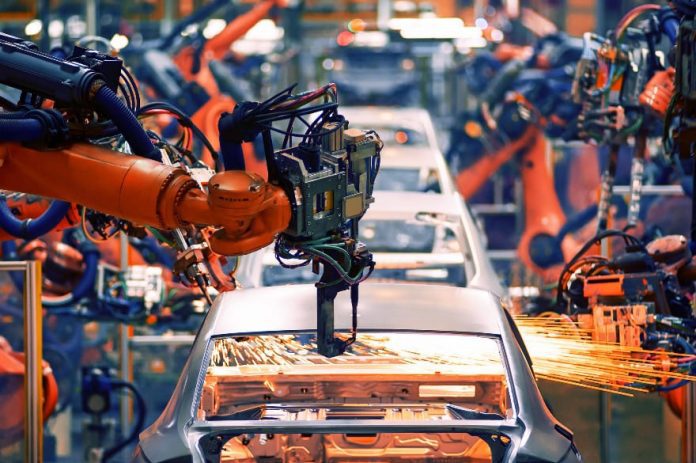Industrial automation, through the use of control systems, enables manufacturers to increase productivity and reduce costs
Industrial automation is associated with the use of control systems, such as computers or robots, and information technologies for handling different processes and machineries in an industry to replace a human being. Initially, the main objective of industrial automation was to increase productivity and to reduce the cost associated with human operators, However, the focus of automation is now more oriented to increasing quality and flexibility in the manufacturing process.
Industrial automation provides a number of benefits for manufacturers including high productivity, high quality, high flexibility and high safety, which results in improvements in the daily operation of manufacturing plants.
How 5G could improve industrial automation?
Industrial automation uses control systems to manage repetitive tasks, often with emerging technologies like IoT sensors, AI vision cameras and autonomous robots. According to Telit, the introduction of 5G technology will enable more and better adoption of industrial automation by powering its various elements’ networking capabilities. For instance, the low-latency wireless communications enabled by 5G will simplify real-time machine monitoring and controls, giving industry leaders more insights and better management of their facilities.
“For example, an industrial facility might adopt 5G to connect AI vision cameras along the assembly line. The high-speed, wireless connectivity would enable managers to track quality control and inspect products remotely with higher efficiency and increased productivity,” Telit said.
Singaporean carrier Singtel noted that industry 4.0 and IoT have brought about the smart factory — a highly digitalized and connected environment where robots, machines and devices are able to self-heal and run operations autonomously. The Asian telco highlighted that one of the main benefits of the smart factory is its ability to automate repetitive, labor-intensive, and potentially dangerous tasks.
“Not only will this lessen human error and the risk of accidents, but it will also give people more opportunities to take on more complex roles,” Singtel said.
German aircraft engine manufacturer MTU Aero Engines has been experimenting with 5G-based production technology to make their operations more efficient. They pilot-tested its applications on blade integrated disks (blisk), which are high-tech components that are used for jet engines. These are milled out of solid pieces of metal, are extremely complex and require the utmost accuracy to produce.
The total lead time to create a blisk is around three to four months. With new 5G-enabled production technology, which involved sensors and IoT technology, the company was able to create an automated factory that could be managed through one network. This reduced the time for the process design phase by 75%, according to Singtel.
Ericsson, Audi, test 5G tech for industrial automation applications
Ericsson and Audi have successfully tested the 5G ultra-reliable low latency communications (URLLC) capabilities with real-life industrial automation applications at the Ericsson’s factory lab in Kista in January, 2020. In the latest demo showcasing the power of 5G URLLC, the two companies have built a robot cell similar to those operating in Audi factories today, but over 5G connectivity.
Thanks to the ultra-low latency and reliability of 5G URLLC, if a factory worker reaches into the cell the robot will instantly stop, making it safe for personnel not to be harmed whilst working with the machines. This instant response with guaranteed reliability is not possible through traditional Wi-Fi or previous-generation mobile networks, meaning that these machines have historically required restrictive wired technology.
Freeing automated machines from wires significantly increases the flexibility, mobility and efficiency of a production line, as robot cells using a wired network connection are restricted in terms of where they can be placed on the factory floor, the companies said. With 5G URLLC, these machines require only a power connection, usually available anywhere in a factory, meaning the production setup can easily be changed and units moved around on a day-to-day basis to maximize efficiency.
For more 5G manufacturing content, check out the following:
- What is 5G manufacturing and what does it mean for productivity?
- Top 5 5G manufacturing use cases
- Three 5G manufacturing case studies: Audi, Haier, Bosch
- What’s the role of a digital twin in smart manufacturing?
- 5G manufacturing use case spotlight: Automated guided vehicles
- 5G manufacturing use case spotlight: Real-time video analytic
- How to improve Overall Equipment Effectiveness with 5G
- 5G manufacturing use case spotlight: Additive manufacturing
- What is lean manufacturing and how can 5G help?
- Top 5 5G manufacturing use cases
- What’s the role of AI in 5G manufacturing?
- What is a digital thread and what does it mean for manufacturers?
- What’s the role of edge computing in 5G manufacturing?

